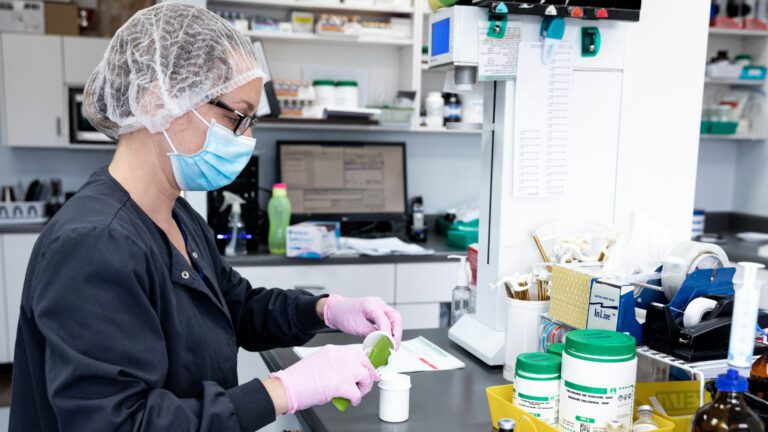
If your pharmacy is engaged in non-sterile compounding, you’ll need to perform a risk assessment to identify precautions you need to take for the safety of compounding personnel. Depending on the level of compounding performed (A, B, or C), adequate personal protective equipment (PPE) must be worn to minimize risk of contamination of the product being prepared and exposure to personnel.
In ACP’s non-sterile compounding guidance document, PPE is described as: “All garb and accessories, such as mask, gloves, gown, and safety goggles, that protect the non-sterile preparation and the worker. It enables compliance with the expected specifications of a controlled environment and protects the worker from exposure to physical or chemical risks.”
The PPE required for any compound must be included in the Master Formulation Record, which lists all necessary information to compound the preparation. PPE is listed among any special precautions to be observed by compounding personnel for that specific compound. The documentation should specify the potential risks to personnel and the extra steps that must be taken to mitigate the risks, along with supporting references.
PPE should also be an element of your pharmacy’s quality assurance program, as part of the personnel skills assessment (technique, following procedures, and using appropriate PPE).
Compounding hazardous products
Section 9 of the non-sterile compounding guidance includes details of the requirements for compounding products identified as hazardous by the National Institute for Occupational Safety and Health (NIOSH), or as irritating to the respiratory tract, skin, and mucous membranes by the Workplace Hazardous Materials Information System (WHMIS). These products require additional safety measures to protect compounding personnel from chemical exposure.
PPE adapted and approved for compounding of hazardous non-sterile preparations must be worn during compounding involving hazardous products. Depending on your risk assessment, this could include the following:
- two pairs of chemotherapy gloves meeting the ASTM International standard D6978 (or its successor);
- a disposable gown made of polyethylene-coated polypropylene or other laminate materials that have a demonstrated resistance to permeability by hazardous products (laboratory coats, surgical scrubs, and isolation gowns made of cloth or other absorbent materials are not appropriate PPE for hazardous products);
- disposable head, hair (including beard and moustache, if applicable), shoe, and sleeve covers;
- respiratory protection including
- a fit-tested N95 or N100, NIOSH-approved mask to protect against airborne particles; or
- a full face-piece chemical cartridge-type respirator with a pre-filter or a powered air-purifying respirator (PAPR) must be worn in the presence of vapours, gases, particles (e.g., dust), or if there is a danger of liquid splashes; and
- eye and face protection such as goggles and a face shield or a full face-piece respirator.
A full explanation of the PPE required for compounding hazardous products can be found in section 9.2.3 of the non-sterile compounding guidance document.
For compounding non-hazardous products, compounding personnel must wear powder-free gloves (nitrile or neoprene gloves are preferred) and either a disposable gown (preferred) or a clean lab coat. If needed, compounding personnel should also wear a mask, head/hair covers, and eye protection.
Important reminders for PPE
Compounding personnel must be trained for the proper use of PPE. The compounding supervisor should regularly observe compounding personnel to ensure compliance with the standards and guidance. And, like any other equipment used in compounding, PPE must be maintained and inspected before and after each use.
Remember, while PPE is important for the safety of compounding personnel and the quality of the product being prepared, it is only one element that contributes to a safe compounding environment. Other controls such as ventilated containment devices or closed-off, ventilated rooms, policies and procedures, and a quality assurance program are also key.
For more information on the use of PPE in non-sterile compounding, please refer to the standards, guidance, and other resources found on the non-sterile compounding page of the ACP website.




